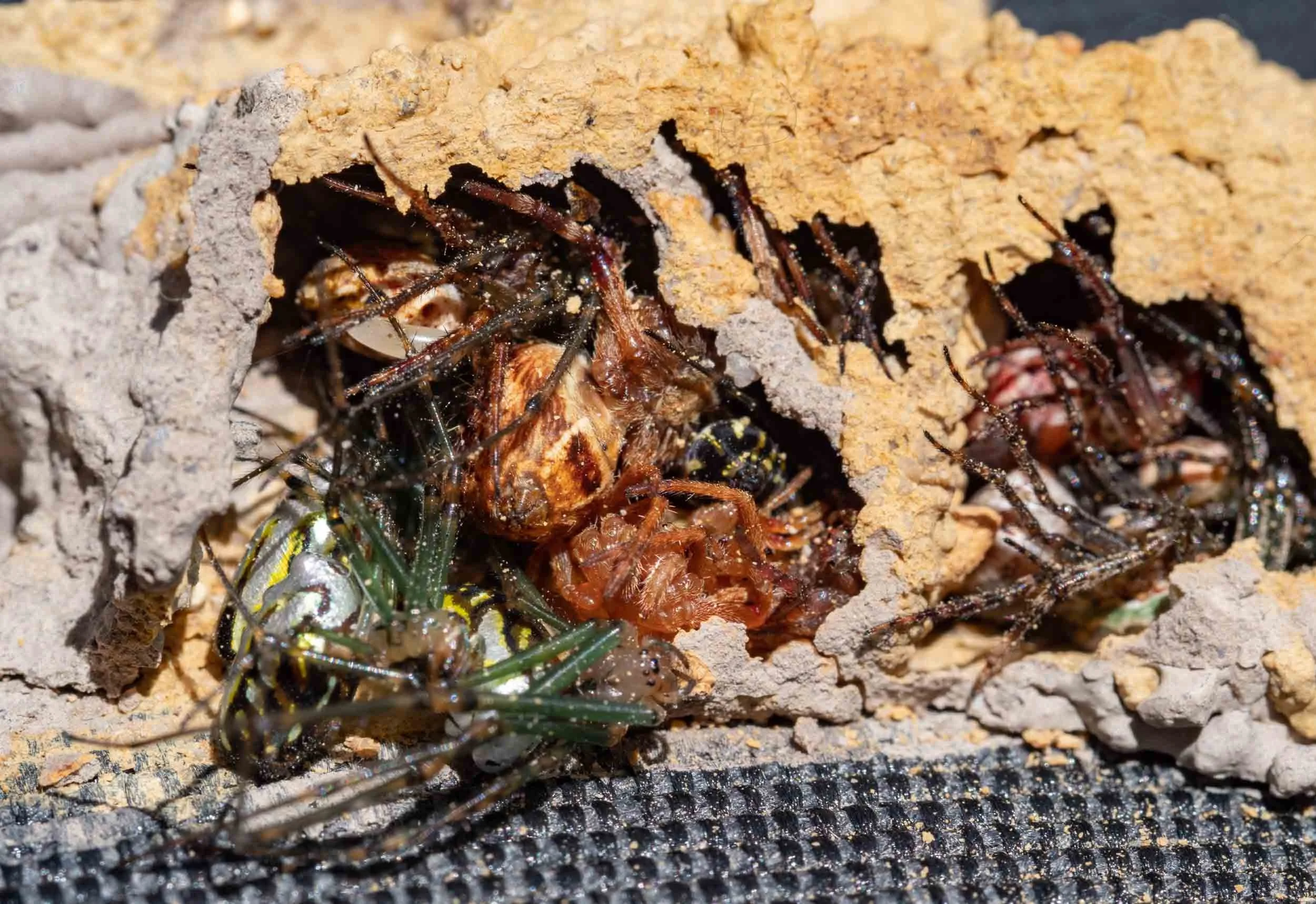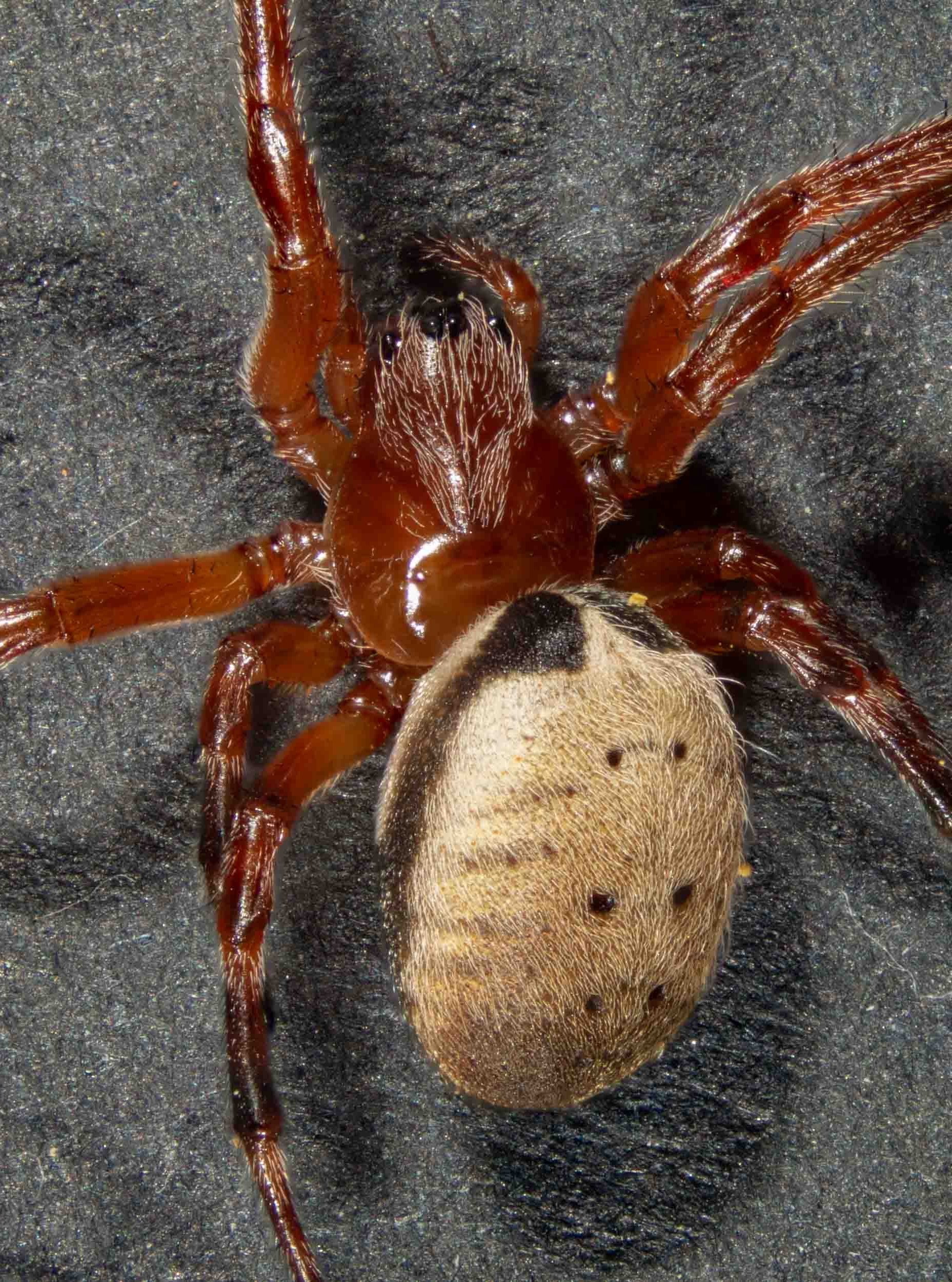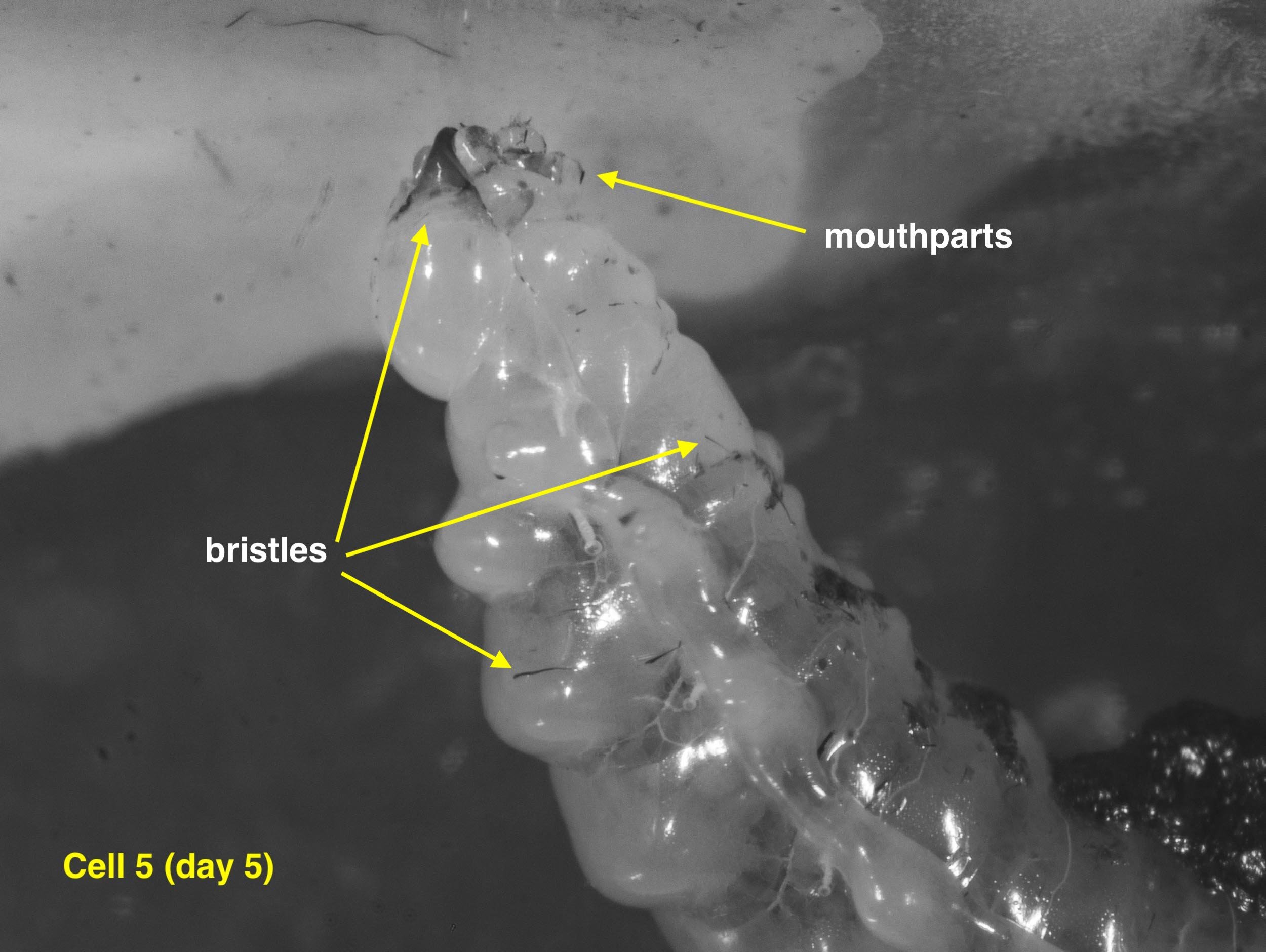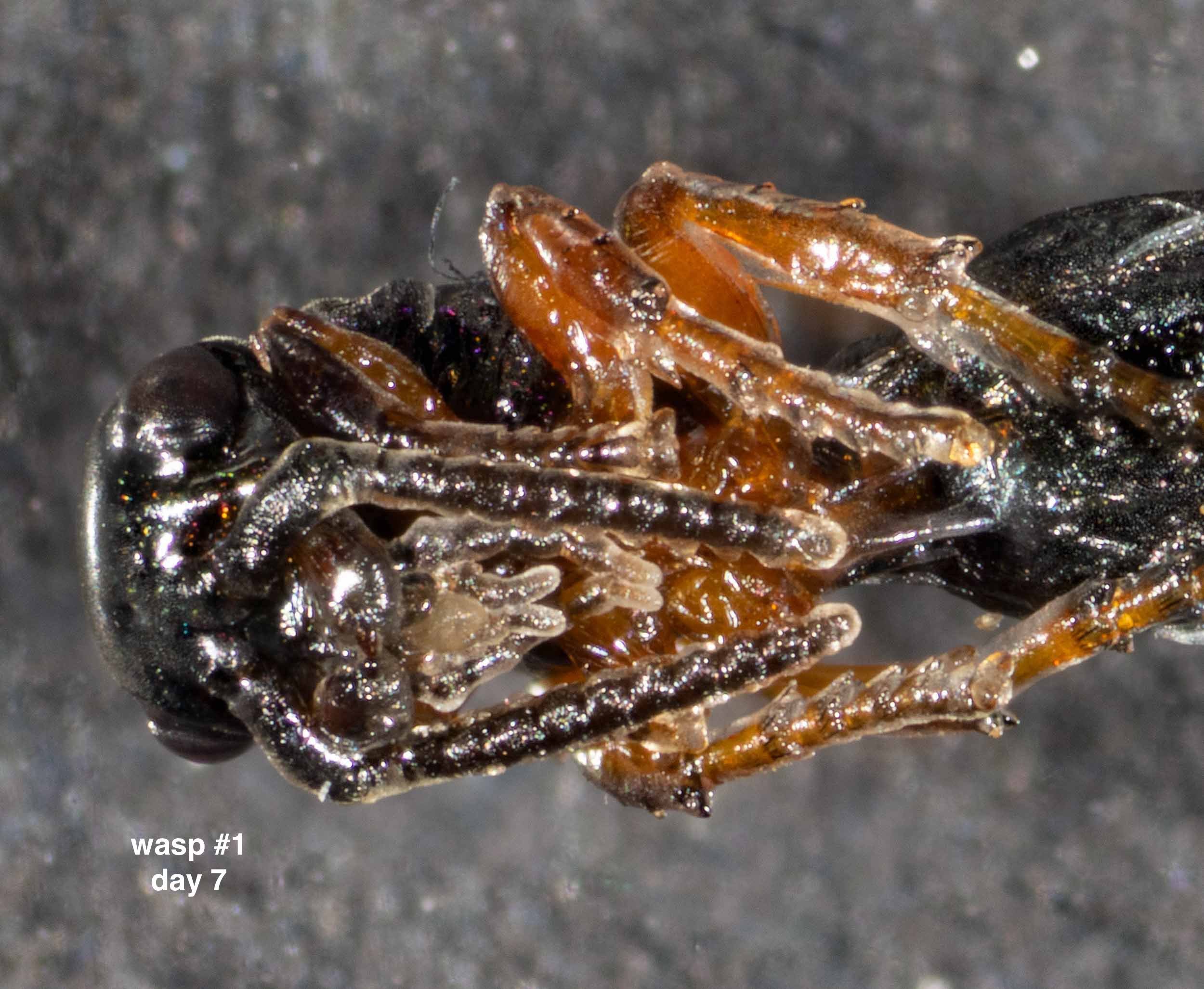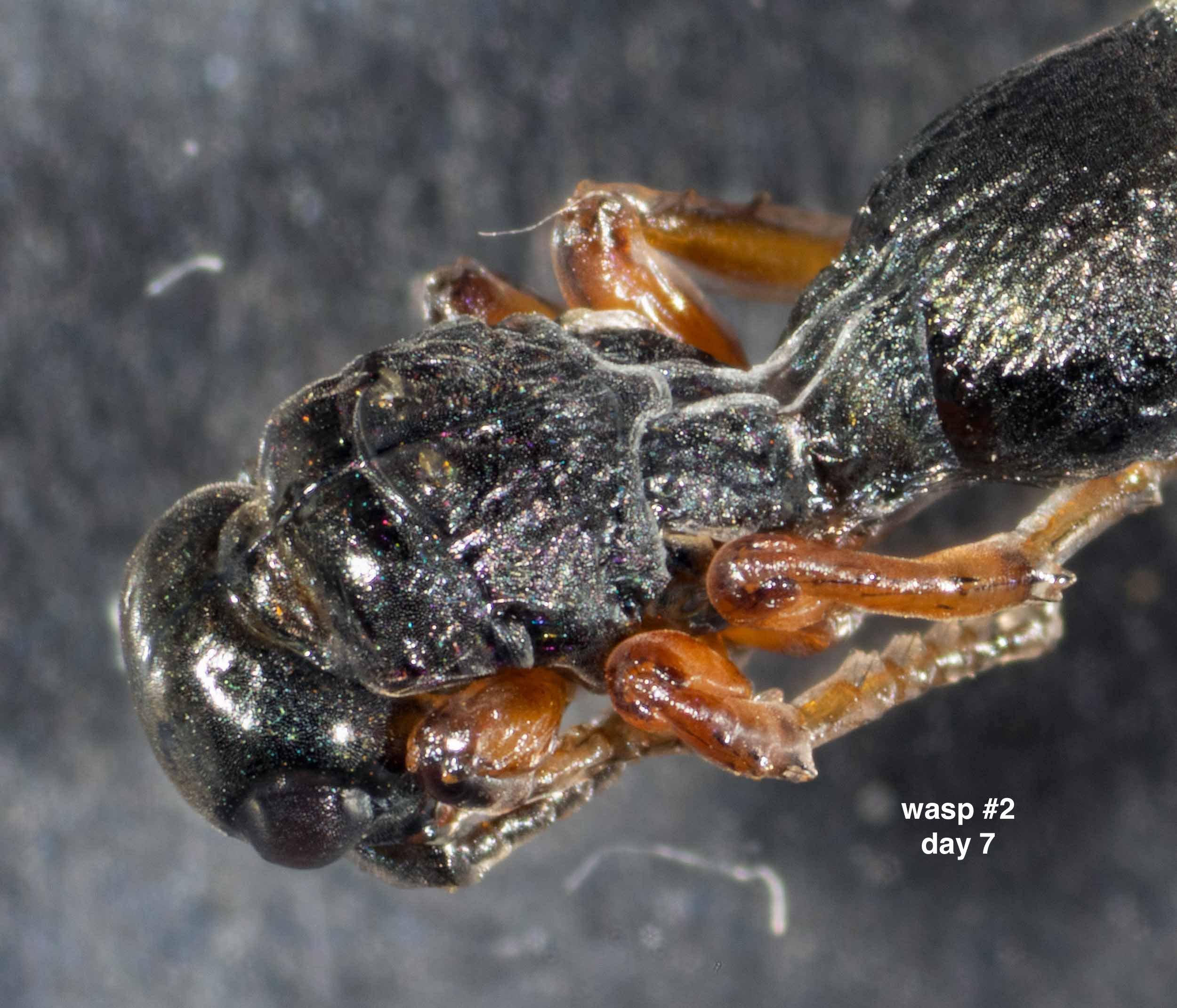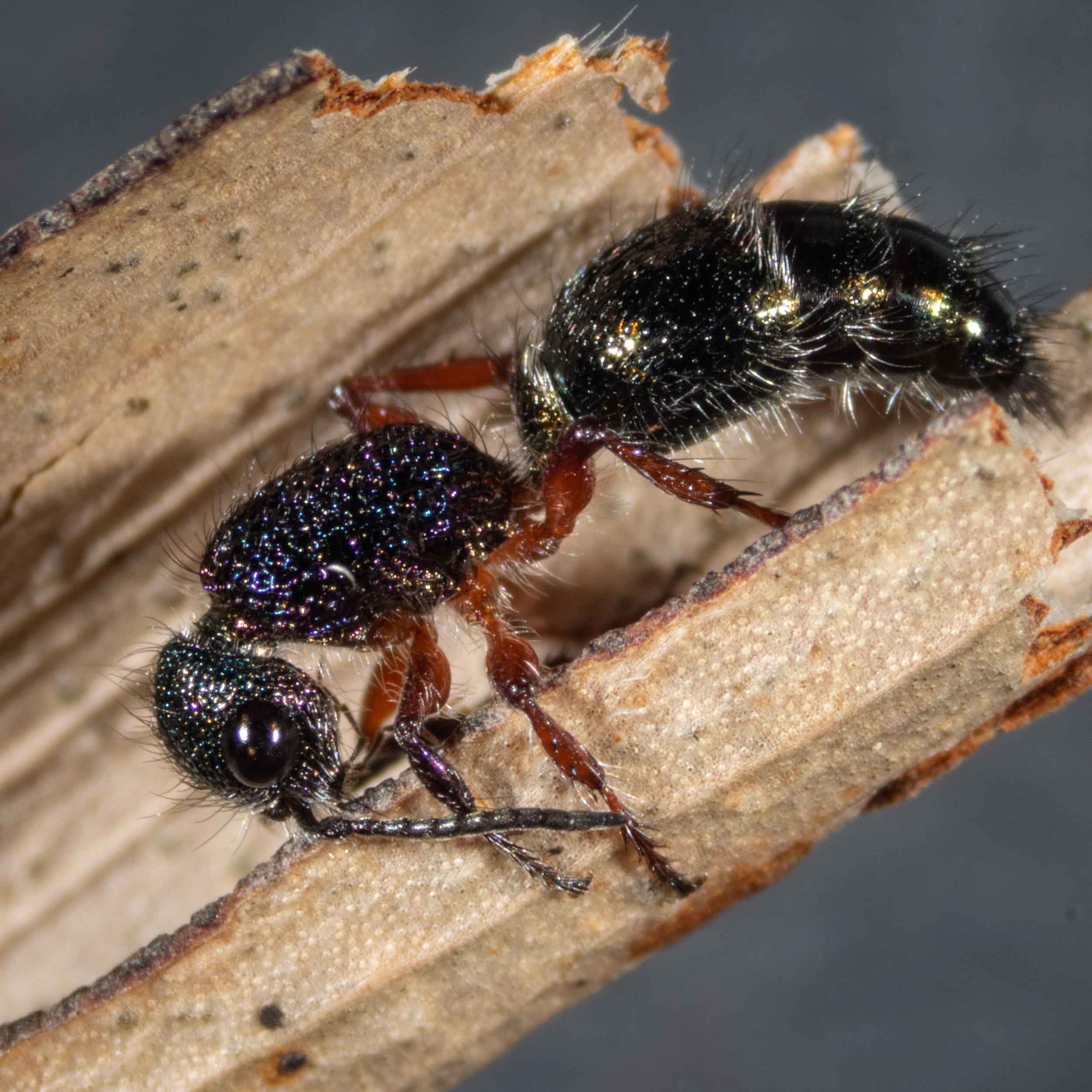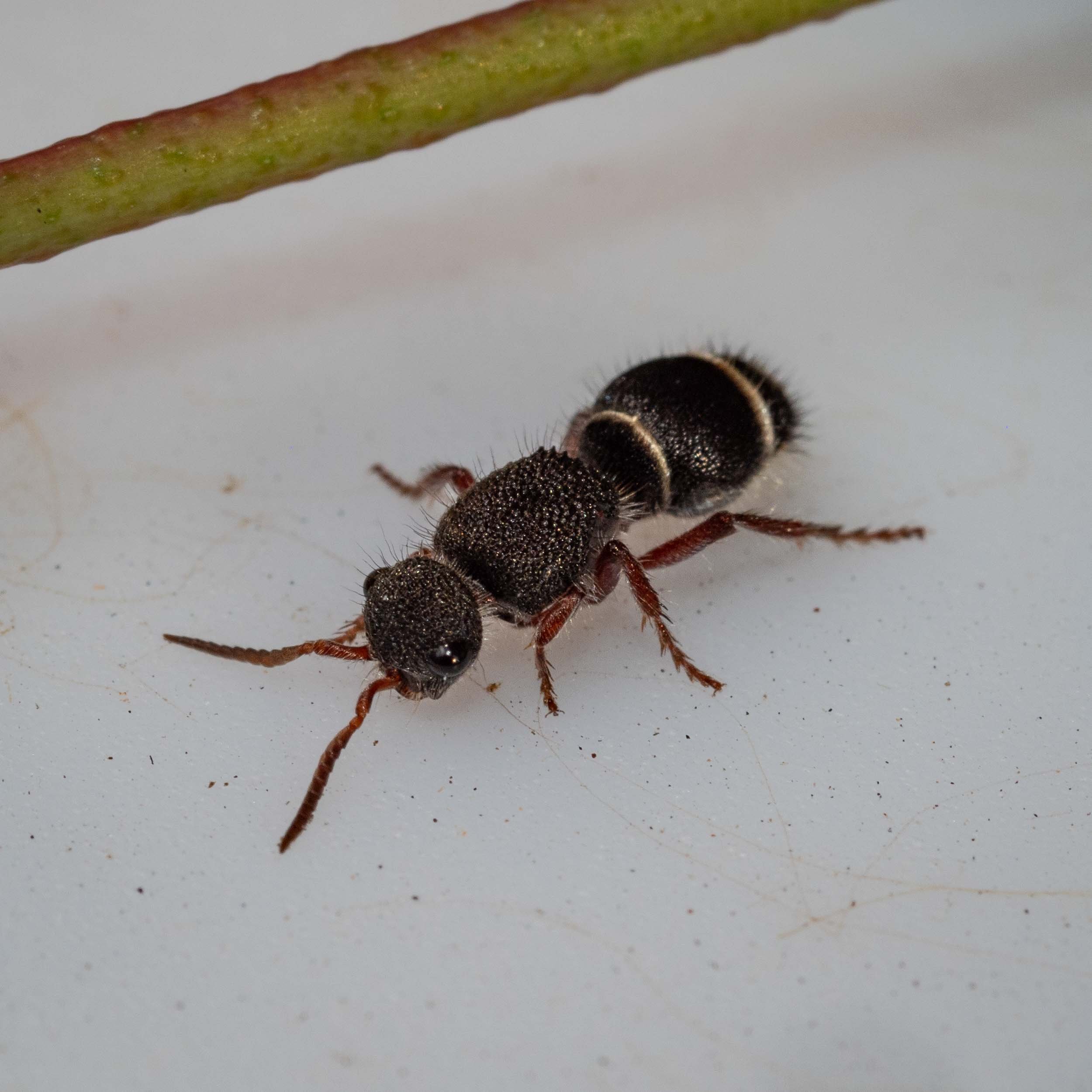A window into mud nests
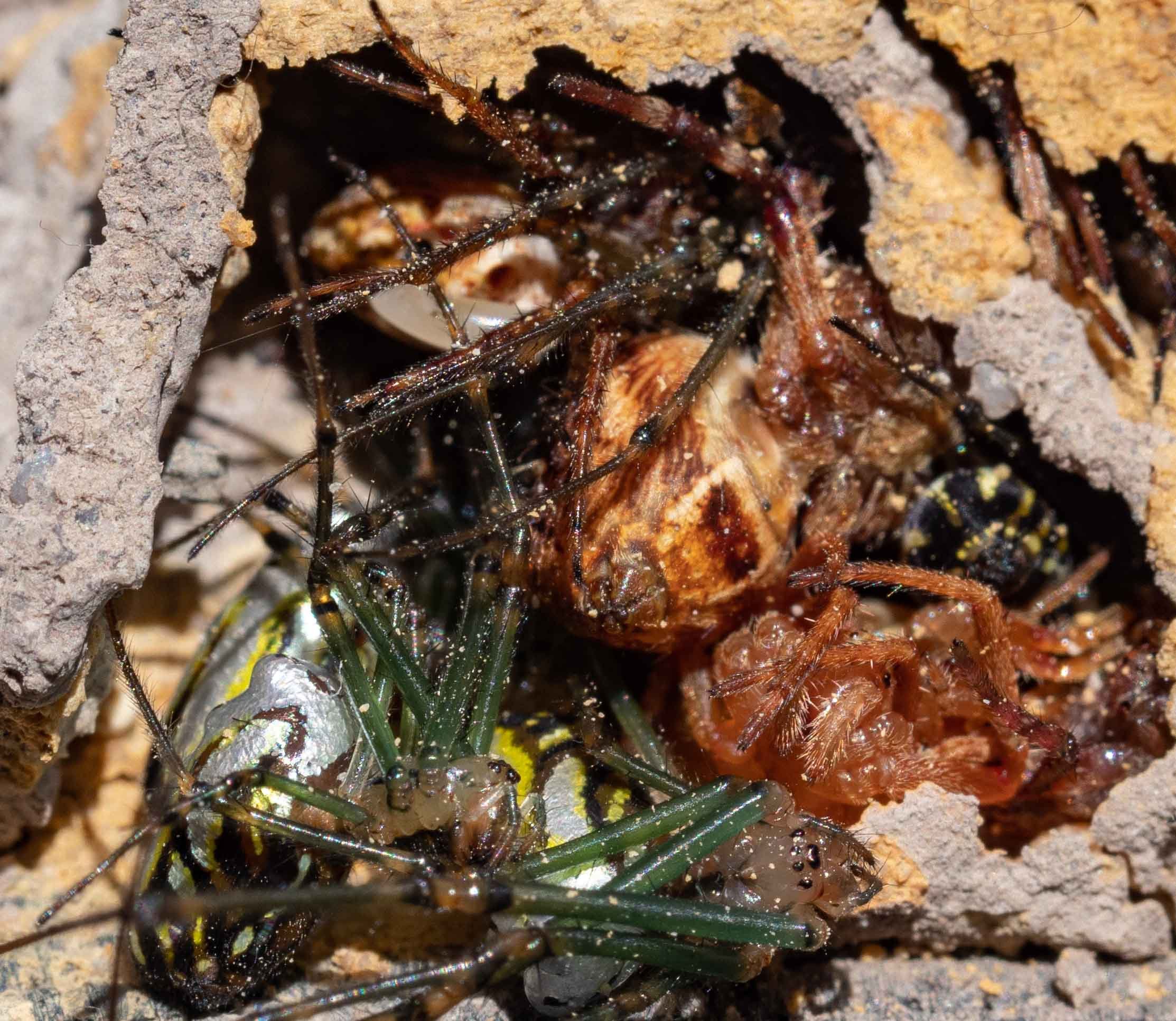
The constructions of mud-nesting wasps are familiar to most people. Clay pots built under the shelter of the verandah, or sand domes stuck to walls. Dried mud clogging key holes, garden taps or screen door frames. Hard sand cementing the folds in umbrellas or outdoor furniture, crumbling when disturbed.
We’ve all seen them, somewhere. But what is happening inside?
A happy accident this week prompted us to take a closer look. A cluster of cells broke open, spilling their colourful contents …. literally dozens of small, motionless spiders.
We gathered the nests, sorted and imaged the contents, then set them carefully aside to see what would happen next.
This also led us to wonder about another nest.
This dome of grey sand has persisted on the house wall since last Summer. What might be happening inside? We decided to take a look at that too.
a female wasp adds the finishing touches to her nest on 1st March, 2021 (case study 2)
While I find all this rather fascinating, Paul warns me that not everyone will feel the same way. We shared early shots with a family member and she was not impressed (to put it mildly). So if you really dislike spiders, or if animal predation scenes distress you, quickly scroll to the bottom for some truly pretty wasps … or jump straight to Paul’s latest post on flower-visiting insects. Certainly more picturesque, but arguably not more interesting!
Here’s what I’ve discovered so far.
Case study 1: the spider-packed nest
There were five cells, all fully sealed and separate from one another. Each was completely filled with spiders, tightly packed in, legs typically drawn together above the body. And within each cell was a single egg (Cells 1,2, & 4) or small larva (Cells 3 & 5).
An interesting note here. Look at the position and orientation of the eggs and larvae (yellow arrows). They are all the same! Attached to the abdomen, dorso-laterally, at an angle, on the right side. And they are facing backwards, the head at around mid-abdomen level (as can be seen by the larva in Cells 3 & 5, and later in Cell 2 when the egg hatched).
These spiders are clearly not dead. Their colours are vivid, their bodies and legs pliable. And just occasionally I see a leg twitch!
The spiders are all orb-weavers or related web-spinning spiders. Forty-one spiders, half of them are Plebs and a further ten are Hortophora. Males and females, small and large, adult and juvenile, but fat-bodied spiders all! Each is in perfect condition; no missing legs, no apparent injury. But all clearly paralysed.
Spider survey an added bonus. The nesting wasp’s industry has provided me with a convenient sample of the local orb-weavers, demonstrating the beauty and diversity of their colours and patterns. An unconventional but effective method for photographing compliant, live spiders. I was tempted to include the full photo gallery. Perhaps that’s for a future blog post.
The nest is most likely the work of a Pison wasp … often referred to as mud-daubers. We didn’t see her at work, so can’t be certain, but it does look like Pison handiwork. Pison is a cosmopolitan genus with many (~170 named) Australian species. They are known to build nests of this type and to pack each cell with multiple paralysed spiders. The growing larva consumes the still-living prey, one after another, then pupates and ultimately emerges as an adult.
Embryonic development had just begun when we collected the nest – and progressed rapidly. It seems we started this journey right at the beginning. The nest must have only recently been completed.
The changes we observed in just one week were quite remarkable. Eggs to tiny larvae; tiny larvae rapidly growing and changing shape.
I put the contents of each cell into a small, loosely-capped vial. Although not perfect for viewing, it’s not too bad, and so far seems adequate for the health of the larvae. Under the microscope we see peristaltic waves pass along the body of each young larva as it sucks in the contents of the collapsing prey. Then, as it grows, the mandibles come into action and the rapidly growing wasp chews and swallows the entire spider body.
OK, I admit, it all gets a bit gruesome … so I converted the later images to black and white. This shows the larval morphology even more clearly than does colour. And it’s somehow a bit less disturbing.
What we’ve learned so far
The larvae are voracious feeders and grow quickly.
Within a few days of hatching they progress beyond a liquid diet and start taking solids … mouthfuls of spider, cuticle and all!
They develop a series of lateral bumps that presumably provide purchase as they writhe and squirm about their cell.
They leave the hard parts of the spiders until last. It’s the abdomens and smaller spiders that disappear first. It seems that only a sizable larva can chew through the legs and the cephalothorax of larger spiders. But they do! The larvae in Cells 3 and 5 consumed all their spiders in just 7 days.
But is it indeed a Pison species? With luck, larvae 3 and 5 will continue to develop. The other three cells failed – the egg in Cell 2 hatched and grew slowly for a week but then died, while the other two eggs did not hatch.
Case study 2: a parasitised Pison nest
In late February 2021 we noticed a small black wasp building a nest on the wall of our house, about a metre above ground level. Easy access for observation. We didn’t see her ferrying prey, but assumed she was hunting spiders. After all, she is a Pison species and spiders are their known prey.
Pison female completes her mud nest (1st March, 2021)
She walked about tapping and stroking the surface with her antennae, and then collected mud to patch every gap or crack. This was the very last day of construction. We didn’t see her again and the nest remained unchanged.
Some weeks later, with the wasp long gone and the nest sealed up tight, we noticed another change. Several small, round holes in the nest. Surely these were too small to be the work of emerging young. The most likely explanation … the nest had been parasitised!
So in mid November, more than eight months after its construction, we pried the nest from the wall and broke in for a look. Three cells in total – and each with a papery cocoon!
There were indeed spiders here once, but now the only evidence are the fangs and a few other fragments scattered amongst the supporting silk threads.
I decided to take a look inside a cocoon.
The multi-layered cocoon construction was impressive. The insect inside even more so!
I opened a second cocoon to find an identical pupa, although at a slightly earlier stage of development.
The next obvious question: are these the Pison’s offspring or are they intruders?
I’m convinced these are parasitic wasps that have developed at the expense of the Pison larvae. The round eyes and head are the wrong shape for Pison, which have distinctly emarginate eyes (indented or notched) and a rather square head.
And that long projection must be an ovipositor or sting. So they’re both females – males develop neither.
Technically these are ‘pharate adults’, not pupae. If you look closely you can see a gap between the outermost cuticle and the one developing below. This is particularly evident in the antennae and legs. They will continue to develop inside the pupal cuticle … which fortunately for me is quite transparent, a convenient window into what happens next.
Wasp #1 development over the first week after removal from the cocoon
Wasp #2 development over the same 5 days
I find it fascinating to look closely at the development of individual body parts. The mouthparts, legs, antennae rapidly change in both shape and colour. The head went from pale to dark by Day 2. The ovipositor shows no obvious internal cuticle developing, suggesting that it might be retracting. And the metallic iridescence of head, body and thorax – apparent from the outset – became impossible to overlook.
Internal changes were apparent too. Each wasp released a dark drop of liquid from the tip of the abdomen (Day 2 for wasp 1, Day 4 for wasp 2) and became progressively more active and responsive with time – indications that the adult gut, muscles and nervous system were developing. On the evening of Day 2, I spotted the first movement as wasp #2 flexed her abdomen. An encouraging sign at the time, as I was initially unsure about their chance of survival outside the protective cocoons. But they were clearly still alive! By Day 4 both were actively flexing their bodies, particularly when disturbed … probably detecting vibration, or perhaps they could even see me. By Day 13 they would both wriggle about whenever I checked on them.
Yet throughout, I remained unsure of the family. My first thought was cuckoo wasp, family Chrysididae. The dark and sculptured thorax and abdomen, the shape of the head, the glints of metallic green. And the fact that cuckoo wasps, including our local genus Primeuchroeus, has been recorded as parasitic on Pison. I was quite excited to think these might become the beautiful little cuckoo wasps that we quite often see in the forest.
But now we know – and it’s perhaps even more exciting! They belong to the family Mutillidae – velvet ants. Early morning on the 1st of December (Day 17) a final moult revealed these beautiful, wingless wasps.
One of the newly-eclosed female mutillids
She was still finding her feet, having shed her pupal cuticle only a short time earlier. I’m not sure if this is wasp #1 or #2 … they now appear identical.
They look for all the world like living jewels. Sparkling, with a blue-green head, purple-blue thorax, green-gold abdomen, and red legs. Simply glorious!
Note that the long ovipositor, so obvious in the pupa, has apparently been retracted internally. There is no sign of it in the free adults, yet they are definitely females. No wings.
A day later, with no movement from the third cocoon, I decided to open it too. My wish was for a male to round out the story. It is seldom possible to match males and females – they can be very different and they’re seldom seen together (Taylor et al., 2019). No such luck, however. I had no sooner torn a small opening in the golden silk of the inner cocoon but a lively female sprinted out and raced around the petri dish. So all three cells of the Pison nest yielded identical female mutillids.
Like cuckoo wasps, mutillids are known parasites of solitary bees and wasps – including Pison (Taylor et al., 2019).
We have photographed a variety of velvet ants here in the forest
(but none quite as spectacular as the new ones!)
Why didn’t I guess these would be mutillids? I had assumed that all female velvet ants sought their prey underground, so didn’t imagine one would climb a metre up the wall of our house to drill into the grey mud nest. But a bit of reading set me straight. Mutillids have indeed been found to parasitise mud nests in trees, rock faces, and even the walls of buildings (Brothers et al., 2012).
Mutillids are ectoparasites. They feed on the host larva or pupa, ultimately consuming it and then completing development within the protection of the host nest. So the spiders were food for the Pison, the Pison was food for the velvet ant … all hidden away inside a blob of hardened, grey mud.
I’ve yet to identify the species, and it may not be simple. According to Taylor and colleagues (2019), there are many undescribed Australian mutillids. The group has been poorly studied, the taxonomy remains in flux. Most are black, brown or reddish and hairy … but some Australian species are “metallic blue, green, bronze or purple” (Brothers et al., 2012). So that’s a start.
I’ll post our photos to iNaturalist and tap a few known mutillid experts on the shoulder for advice. Perhaps this is a well known species. Or perhaps not. Either way, the fact that we have host data plus some developmental images is likely to be of interest and may even prove quite valuable information.
“Host data are also unavailable for the great majority of Australian mutillid species, with only a very small number recorded from the nests of bees and wasps.” (p201, Taylor et al. 2019)
This whole adventure started when I moved the outdoor furniture and broke open a mud nest.
As usual, serendipity is at the heart of our nature studies.
UPDATE
Case study 2:
By a stroke of good fortune, and even before I got around to posting the sighting on iNaturalist, a mutillid researcher came across this blog. So I was right in guessing that parasite-host data for mutillids was of special interest!
Madalene Giannotta from ANIC in Canberra made contact, keen to know more … including whether we had kept the mutillids from Case Study 2. I had, and so we delivered them to Madalene on 21st Dec. She confirmed that they belong to the genus Aglaotilla … and as she is currently working on the taxonomy of this group, the wasps will be incorporated into her study. Who knows … they may even represent a new species!
Once Madi has finished them they’ll become part of the ANIC collection. Sacrificed, but for a very good cause!
The sighting is now also listed on iNaturalist … yet another species for our every-growing home list.
Case study 1:
We were less fortunate with this one. None of the 5 larvae survived, so we are unable to confirm the identity of the Pison with any degree of certainty.
A third Pison nest uncovered:
Around the same time that the above stories were coming to a close, we yet again (accidentally) broke open a mud-nest. And I’m quite confident that it was the Case study 1 female, having another go.
Again she was out of luck. Not only did we disrupt the single-celled nest before she could lay an egg and seal it, but two of her spiders were already carrying parasites! We successfully raised these and they turned out to be braconids! Not at all what I was expecting. Madalene was interested in this too, so we passed the wasp on to her. I don’t plan a full blog about this, but there is a ‘notes page’ for anyone interested … publicly accessible but quite buried in our website. Oh, and I’ve added the sighting to iNaturalist too.
References
Brothers, D.J., Stringer, D.N., Jennings, J.T. & Austin, A.D. 2012. Australian Faunal Directory: Family Mutillidae. Australian Biological Resources Study. Available here (accessed Dec 2021)
Taylor, C.A., Murphy, M.V., Hitchen, Y. & Brothers, D.J. 2019. Four new species of Australian velvet ants (Hymenoptera: Mutillidae, Aglaotilla) reared from bee and wasp nests, with a review of Australian mutillid host records. Zootaxa, 4609 (2): 201-224

